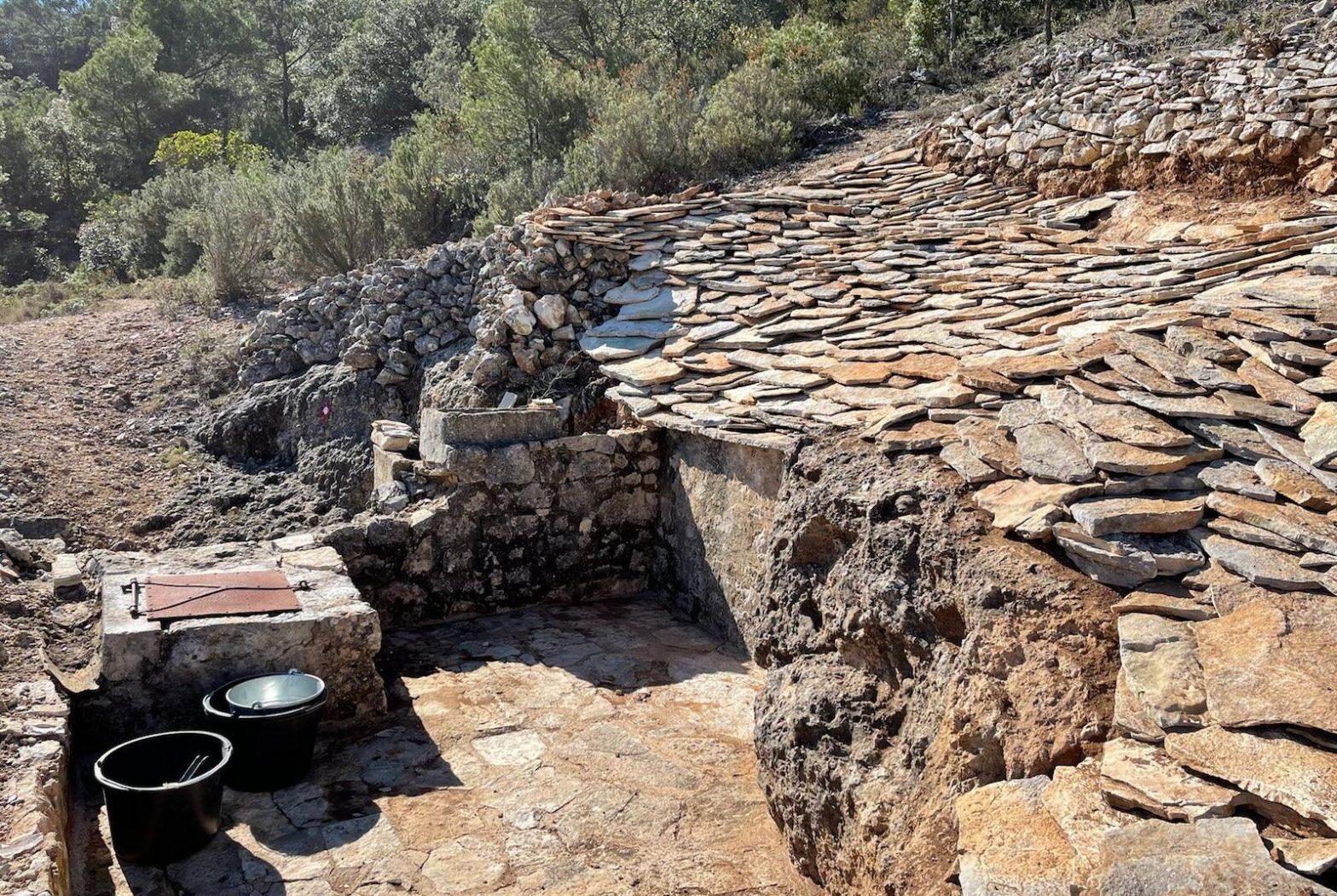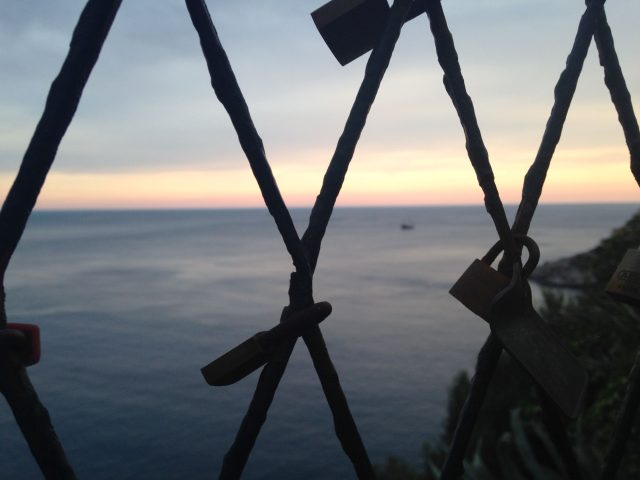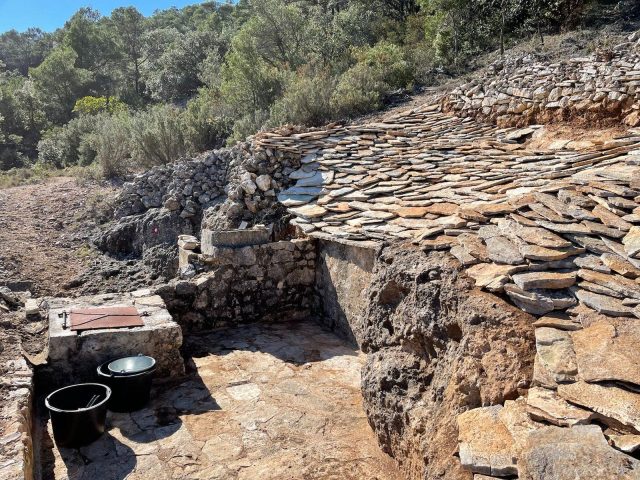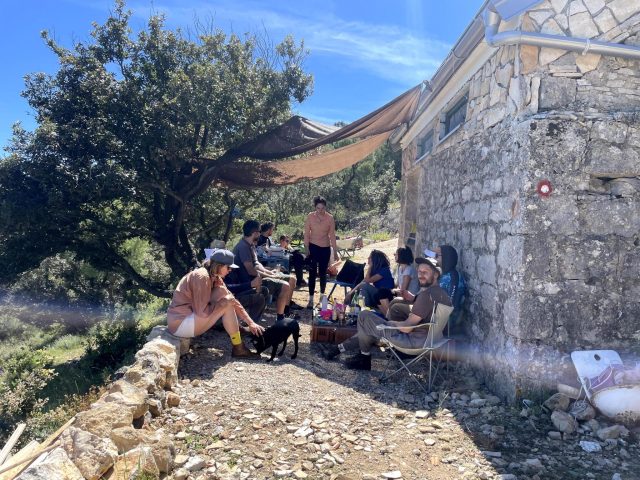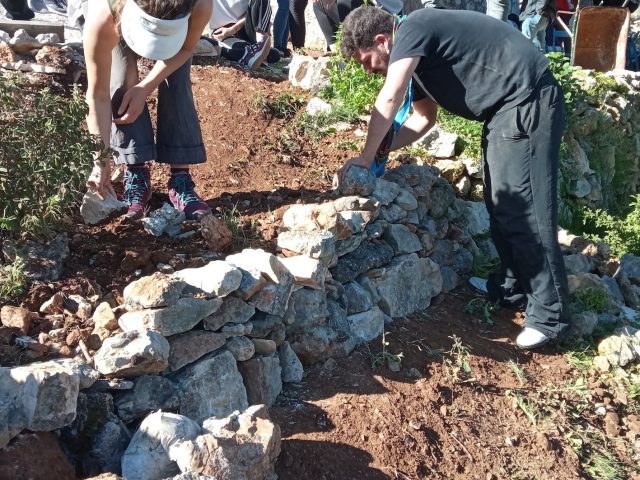People have been creating reservoirs for thousands of years. Some 5,000 years ago, craters of extinct volcanoes in Arabia were used as reservoirs by farmers for their irrigation water. Climate conditions also forced the ancient Greeks to develop advanced hydraulic technology to capture, store and convey water already in the times of the Early Minoan period (ca. 3500-2150 B.C.). How happy must have the Greek settlers from Syracuse been some 2,000 later when they arrived to what is today known as the island of Vis only to realize that the island has its own groundwater sources?
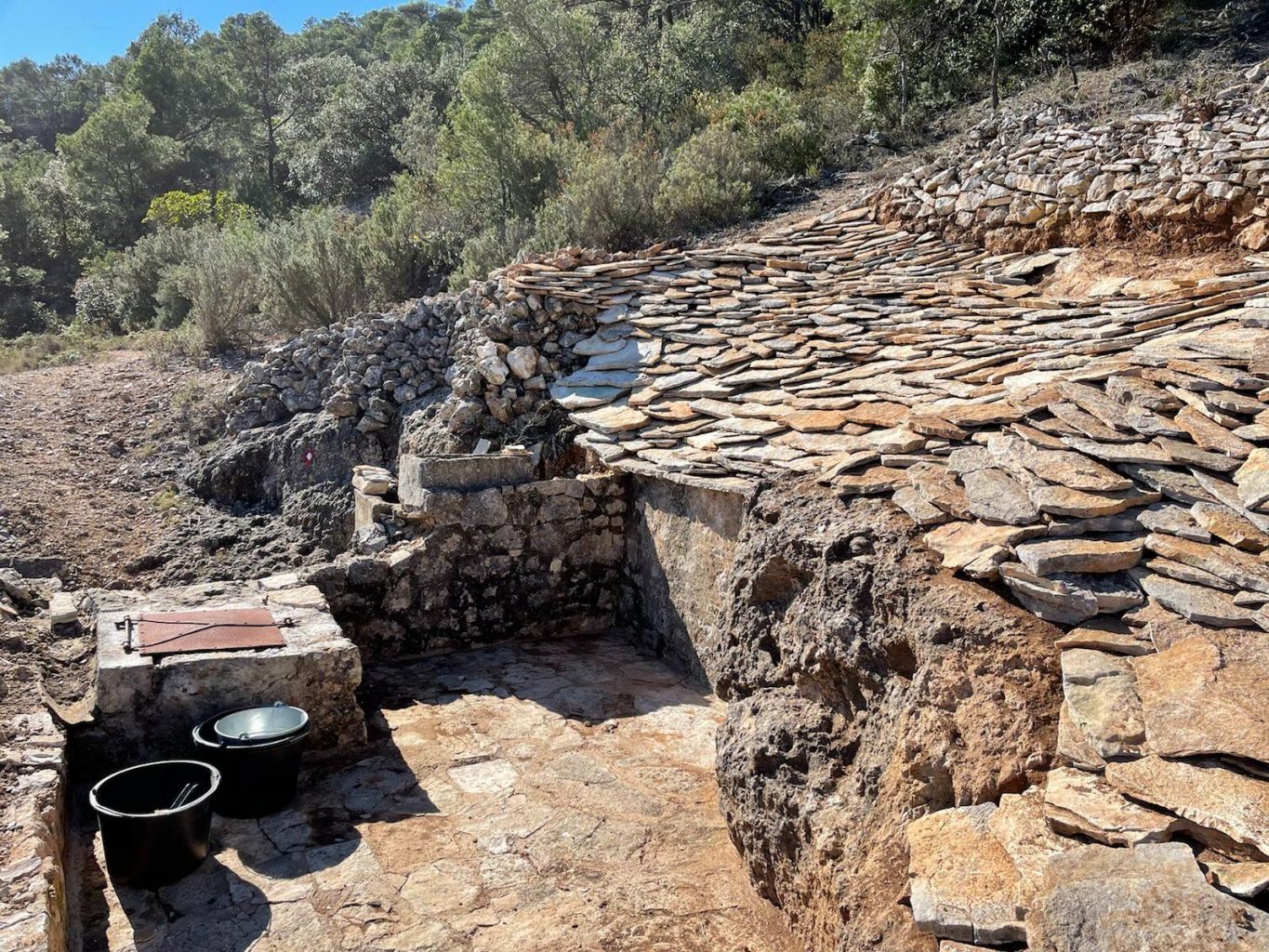
In this part of the Mediterranean, in the region of Dalmatia and its islands, we call the water reservoir gustirna. It’s a traditional water-collecting system which directs rainwater through a drainage basin into a water collection tank. Surface laid above gustirna, tiled stones called pjover, direct rainwater from the hill or house roof and into the underground tank. Those tanks are usually huge, as big as rooms. Before drinking it, the water must be tested – it is usually used for gardening or dish-washing, but if treated it can also be used as drinking water. In places like with the lack of ground water, and especially on islands, you depend on various ways of gathering water. This one is widely spread and quite effective – if the rain comes. At the same time, this method of building and water preservation shows how precious traditional knowledge and traditional ways of building are precisely in our today’s times of climate crisis and the future of water scarcity.
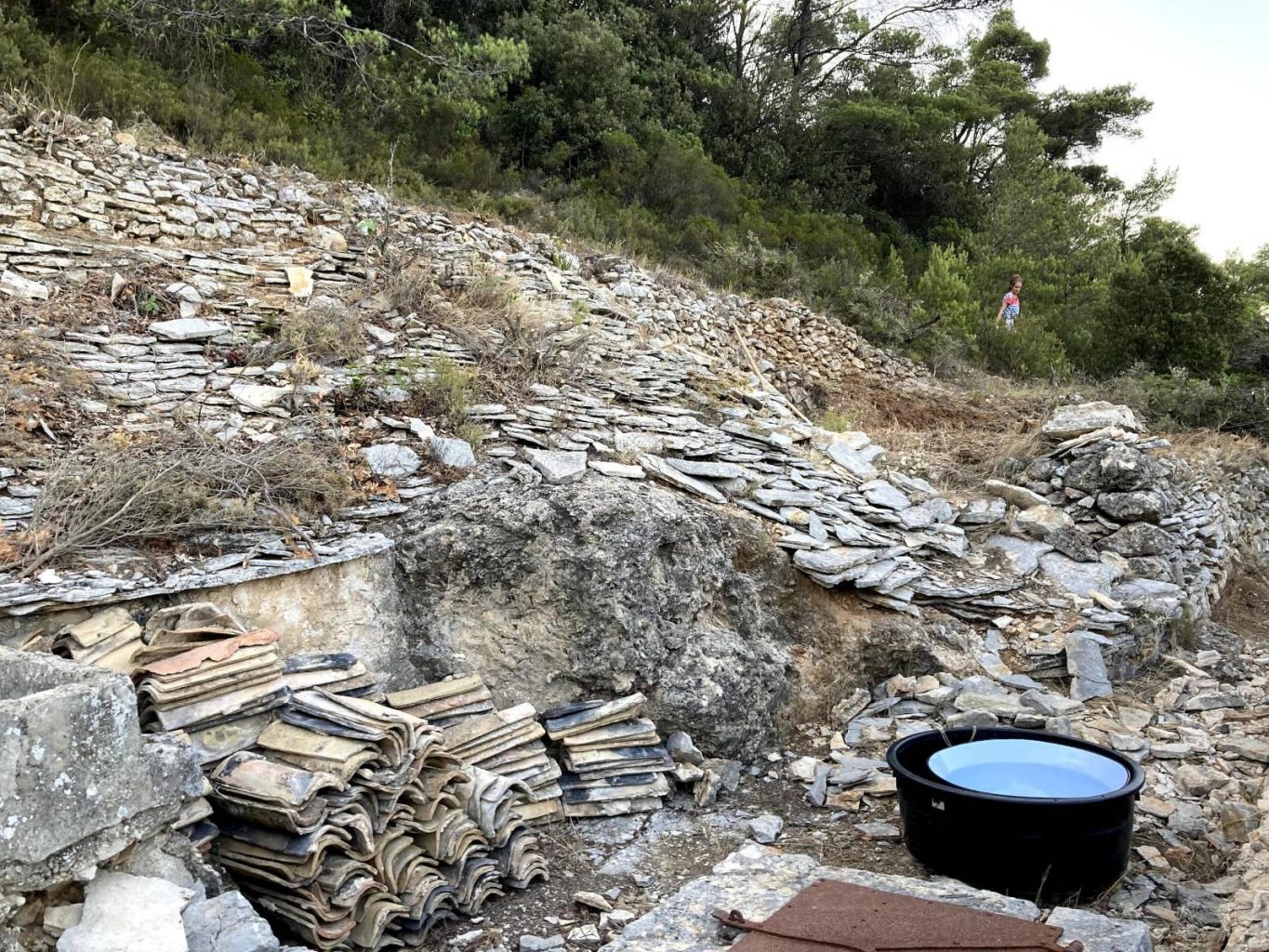
One of the first things we did once we arrived at ISSA, was to start to reconstructing our gustirna, that was completely overgrown by bushes while the roots were spreading into the water tank itself, through the stones, so that no water was being collected.
Before reconstruction:
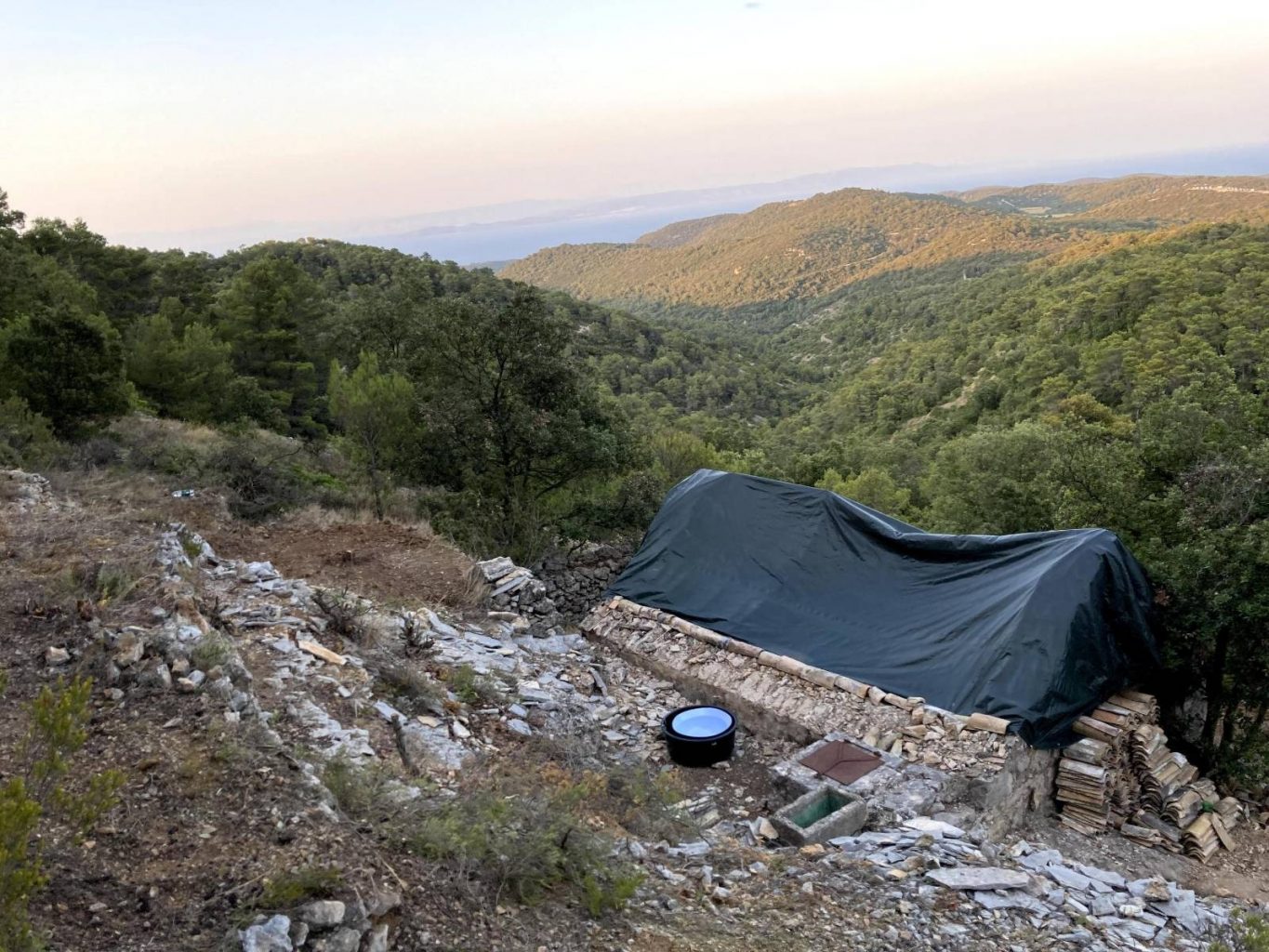
After reconstruction:
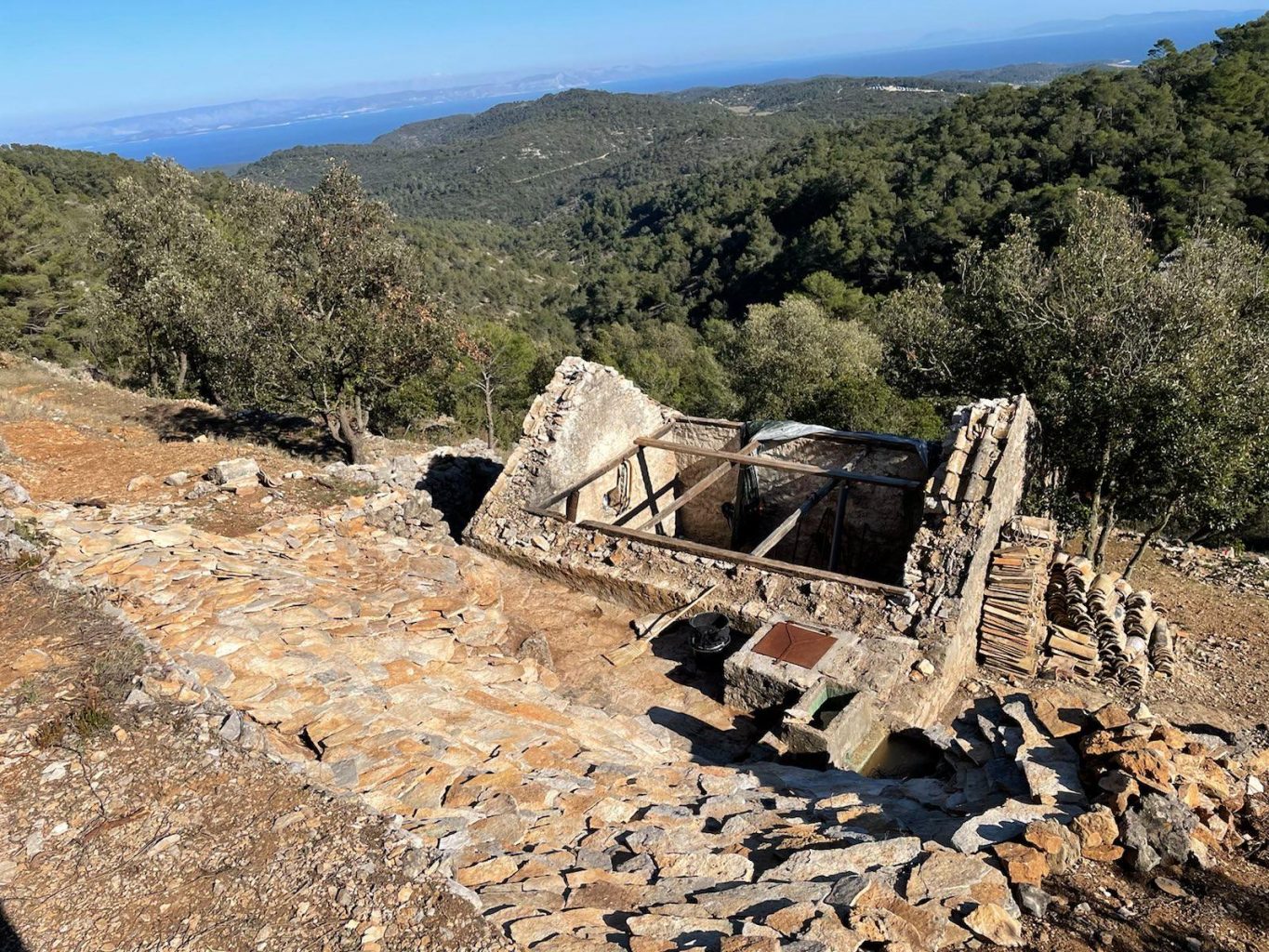
And here it is, the fully reconstructed “gustirna” ready for the first rains:
